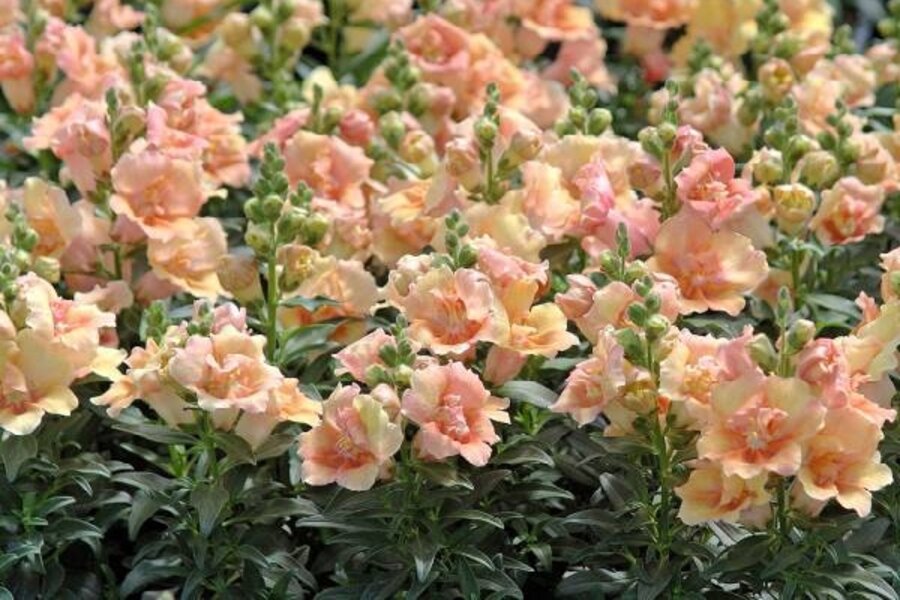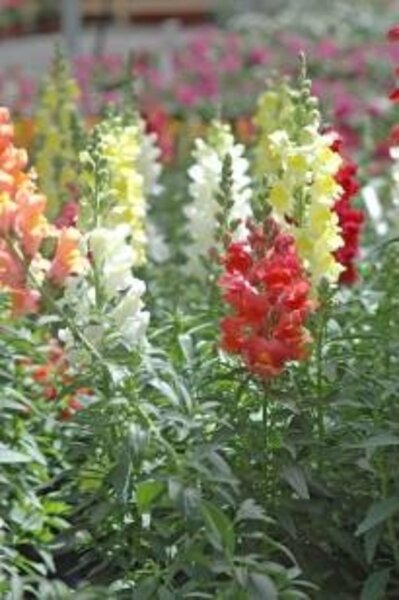Snapdragons are simply irresistible
No matter where you live in the country, there is a season when snapdragons will absolutely steal the show in your landscape. In zones 7 and warmer, many gardeners plant them in the fall as pansy partners. They are planted in late winter to early spring in colder areas where they give riotous colors almost all summer.
The snapdragon is native to Europe and the Mediterranean, and is known botanically as
Improved breeding has made these flowers surprisingly tough — those planted in the fall in zone 7 southward will bloom through May and into June.My favorite varieties 10 years ago were Sonnet and Liberty. The only thing that has changed since then is that Liberty followed in the footsteps of Coke and became known as Liberty Classic.
Both of these varieties get from 24 to 30 inches tall in the garden. This is perfect for those of us who do not want to mess with any structural support. I say that, but believe me, I am mesmerized when I see a good display of the old-fashioned Rockets topping out at 4 feet.
Ten to 12 years ago, my favorite dwarf snapdragon was Tahiti, but the Montego series captured the market because of its sturdy habit. A lot of dwarf snaps had a tendency to almost fall over or have a little spread, but the Montego series that gets about 12 inches tall held their flowers erect, mimicking the habit of Sonnet and Liberty on a much shorter scale.
You can mass plant the Montego series almost as you would pansies, creating sizzling cool-season landscape combinations.
If this height pleases you, then you may want to try one of the most unusual but beautiful snapdragons ever. Look for the 2010 All America Selection Bedding Plant Winner, Twinny Peach.
Twinny Peach is a double-flowered selection, hence the name "Twinny," for twins. It is a rare peach color that gives a nostalgic look to the landscape. It will reach about the same height as the Montego series.
The debut of trailing snapdragons caused some bewilderment for designers. They also brought unprecedented heat tolerance to snaps, the result of hybridization of
andfrom Spain.Varieties such as Lumenaire, Chandelier, and Lampion suddenly offered the opportunity to have snapdragons that would tumble gracefully over containers, baskets, and window boxes, yet with a heat tolerance that let them bloom much of the summer, even in the South.
I have a confession to make to clear my conscience regarding cool-season planting. I haven't done it yet. We have not had a killing frost yet, so I am letting my SunPatiens and Joseph's coats wow visitors to my home.
I know it would be best if I planted cool-season stuff now to let them get established, but what a treat it would be to have these warm-season annuals still looking good at Thanksgiving! You are correct if you think this is a gamble.
To grow dazzling snapdragons, select a site in full sun for best bloom production. Incorporate 3 to 4 inches of organic matter along with 2 pounds of a slow-release, 12-6-6 fertilizer per 100 square feet of planting area.
Set transplants in the garden at the recommended spacing for your variety. Apply a good layer of mulch to keep soil temperatures moderate and add winter protection.
Small pocket plantings of snapdragons are very effective at entryways or near the front door or patio, but mass plantings combined with other cool-season flowers can give an incredible look. Shop for them now at your local garden center or when snap season has arrived in your area.
Editor’s note: For more on gardening, see the Monitor’s main gardening page, which offers articles on many gardening topics. Also, check out our blog archive and our RSS feed. You may want to visit Gardening With the Monitor on Flickr. Take part in the discussions and get answers to your gardening questions. If you join the group (it’s free), you can upload your garden photos and enter our contests.






